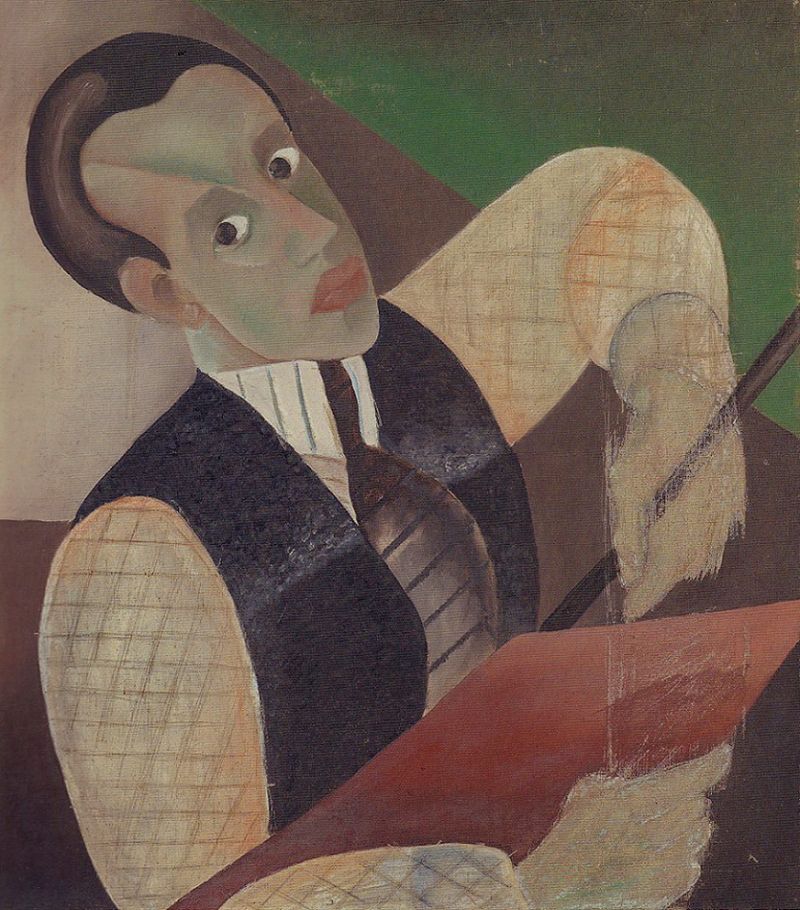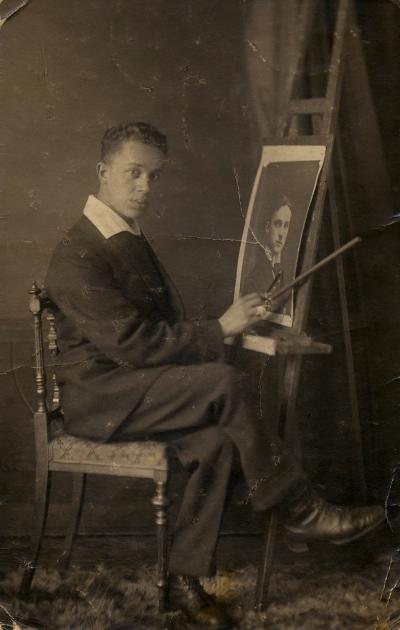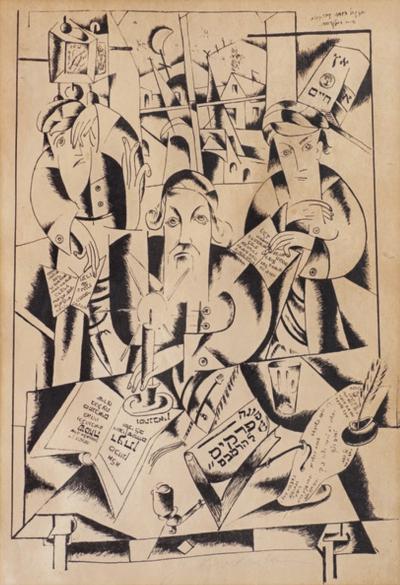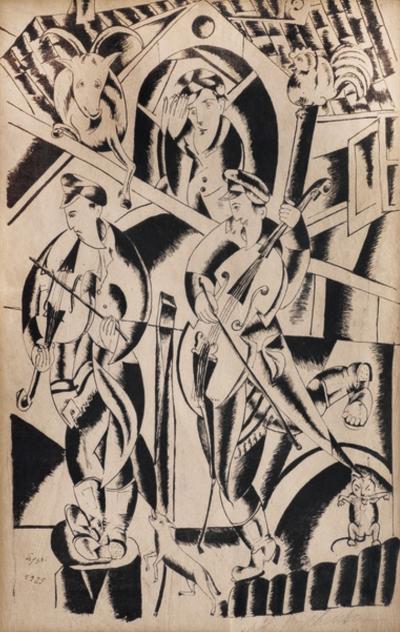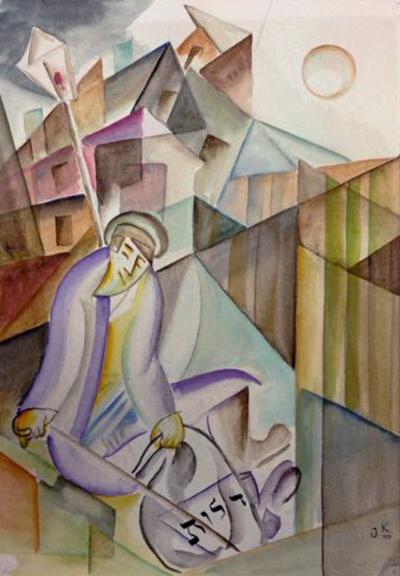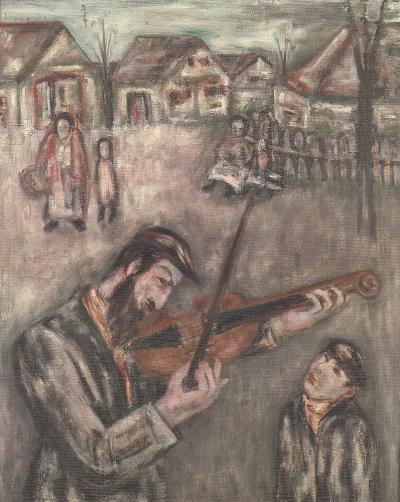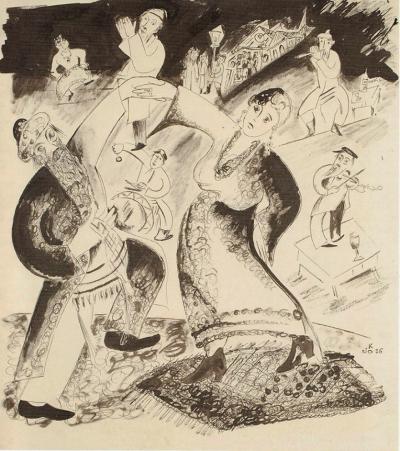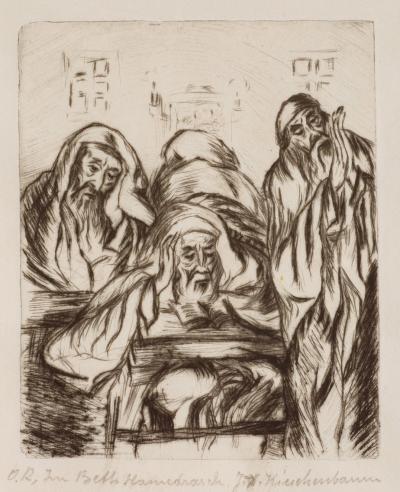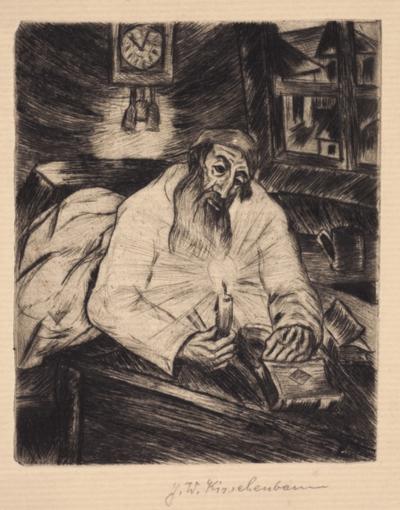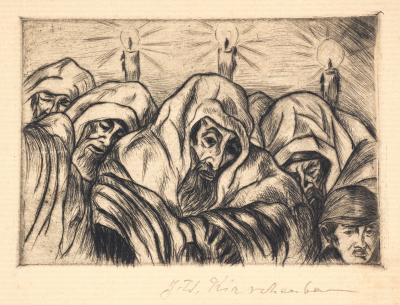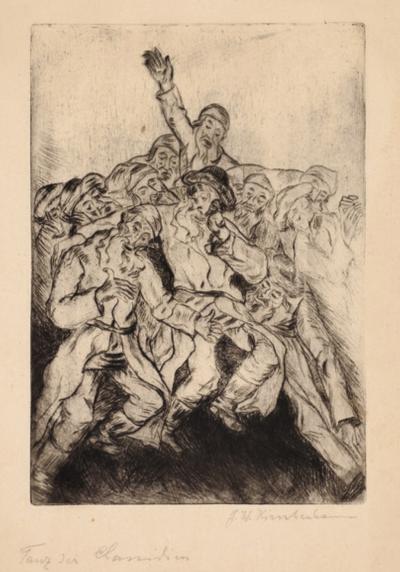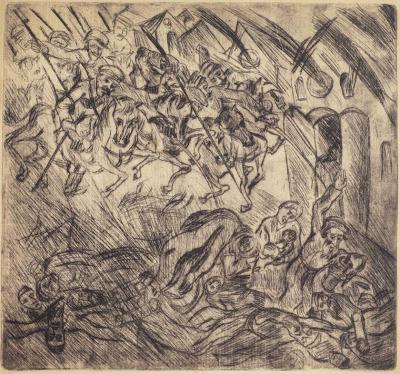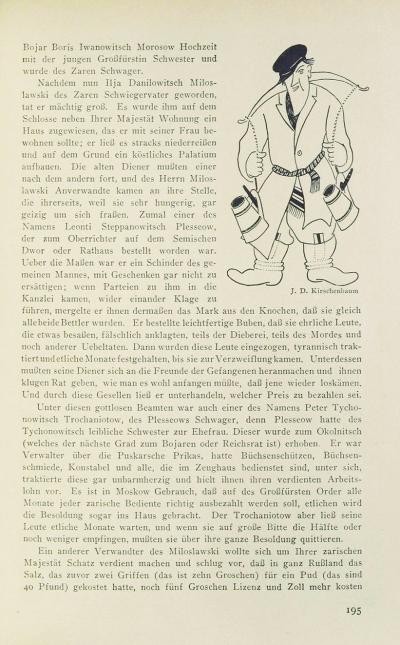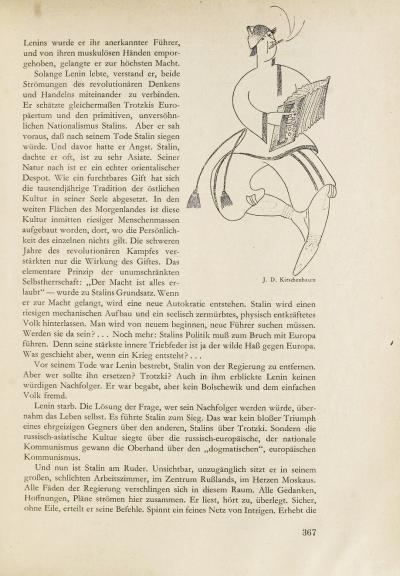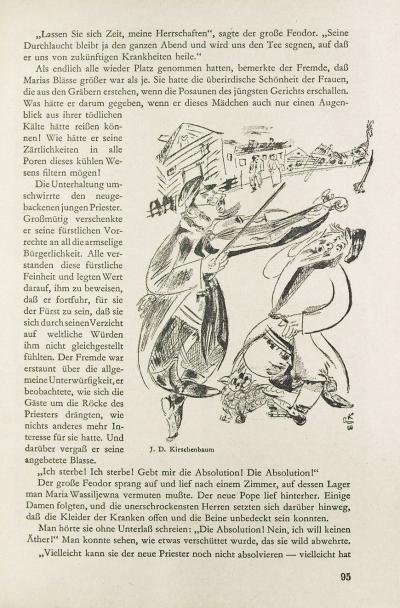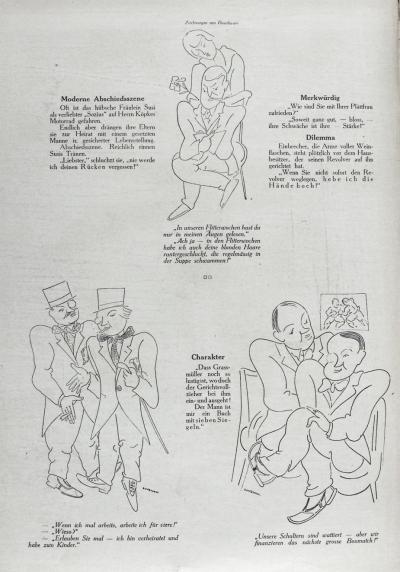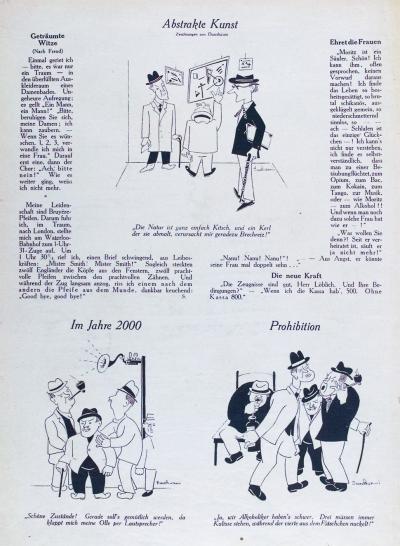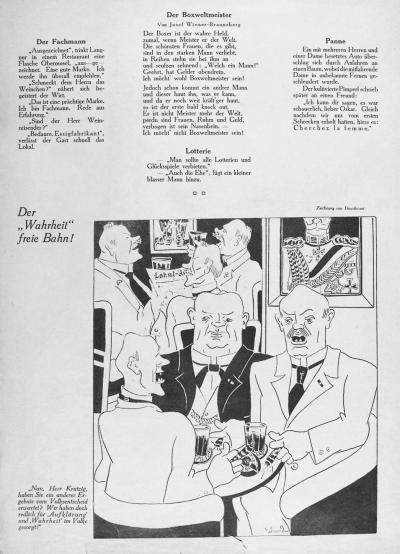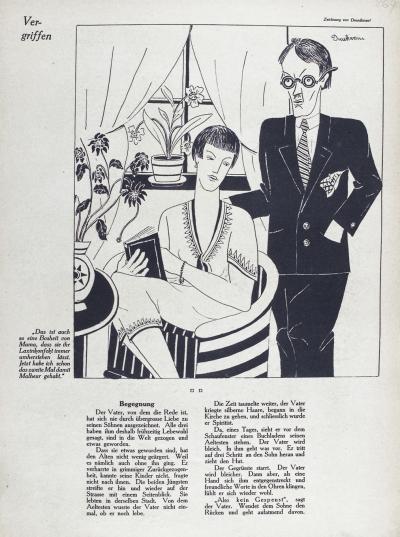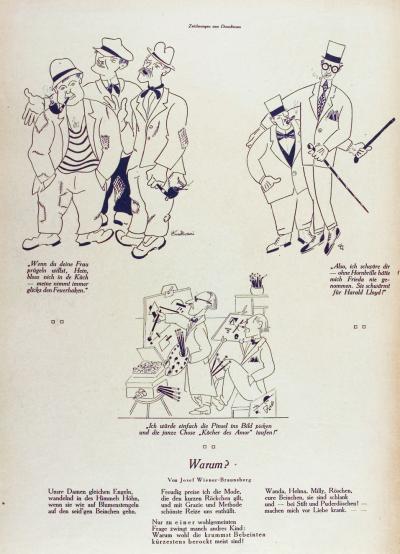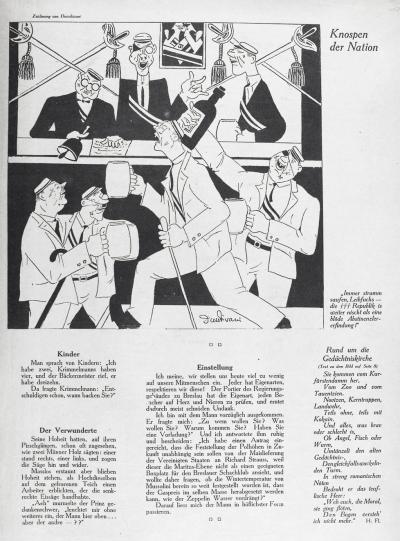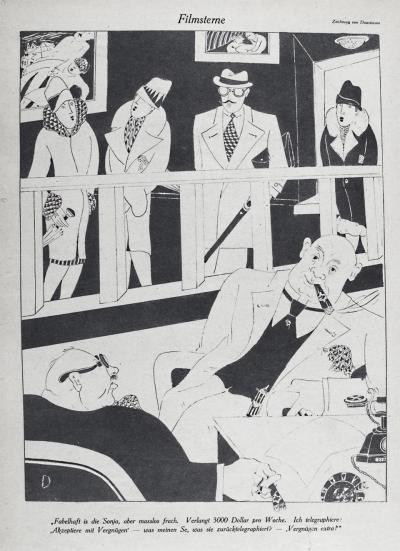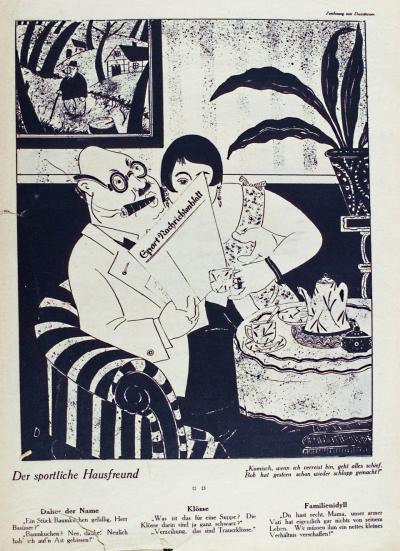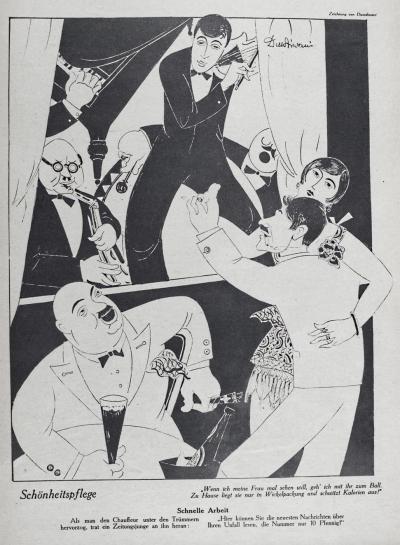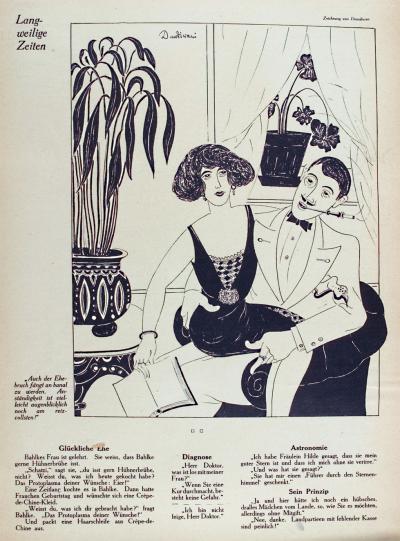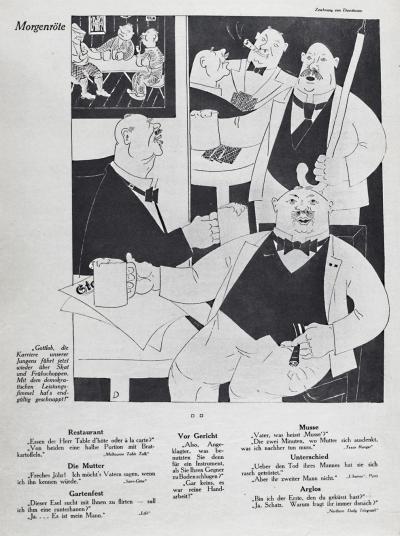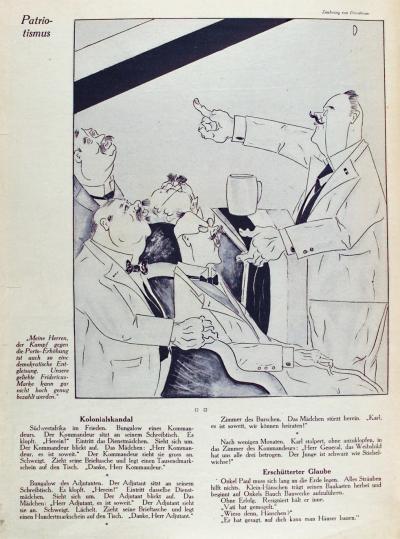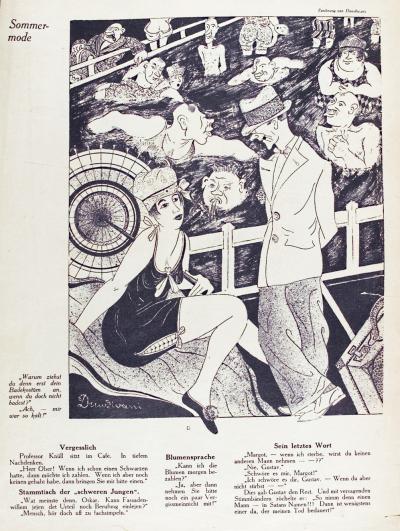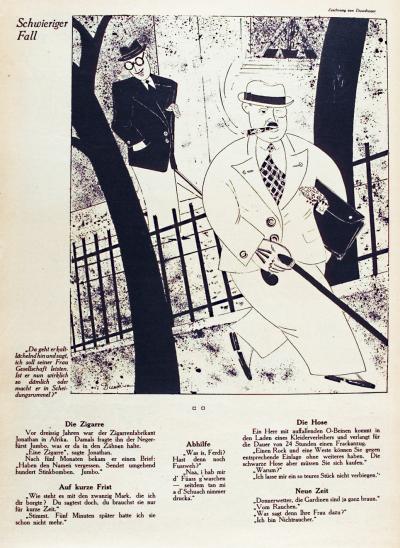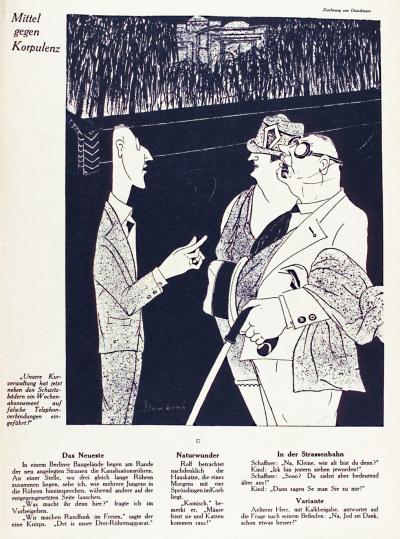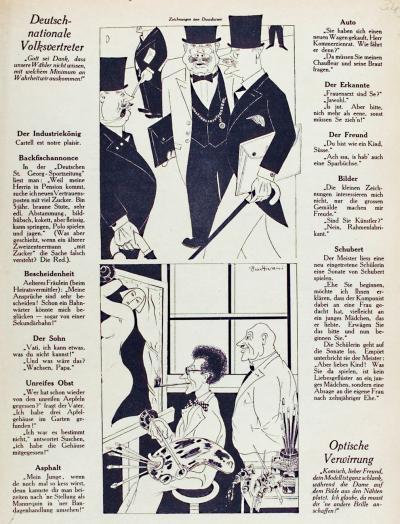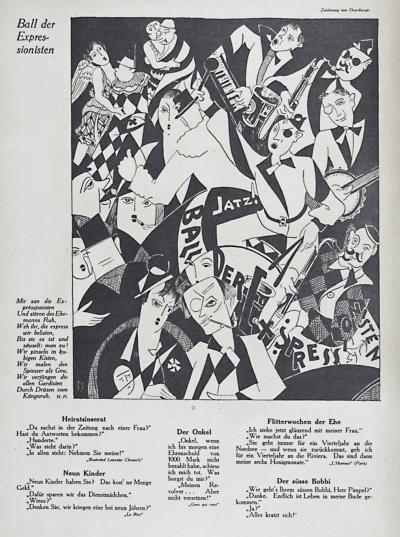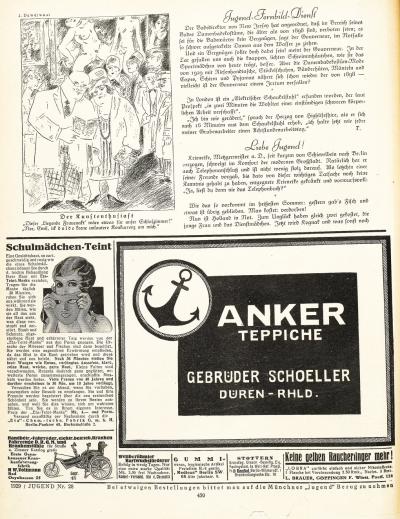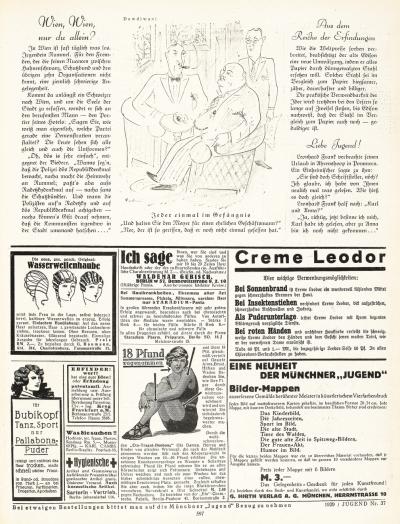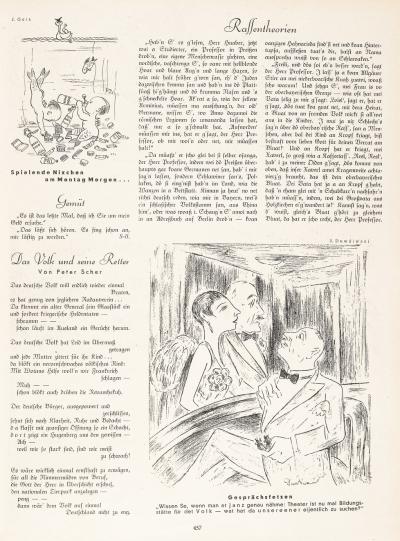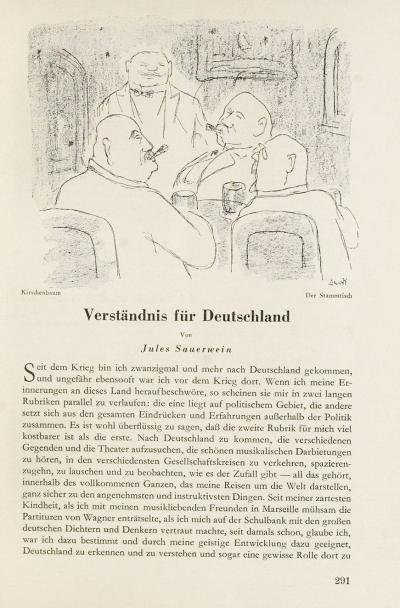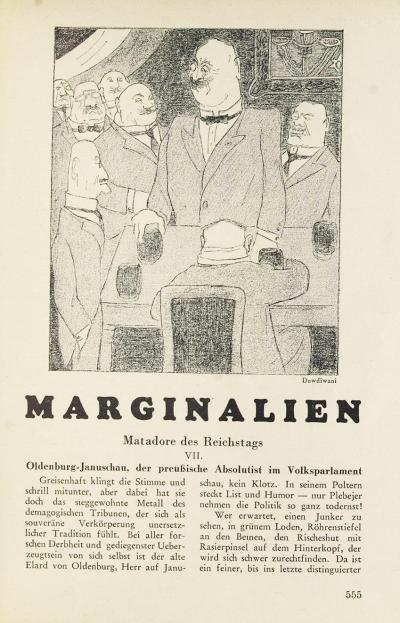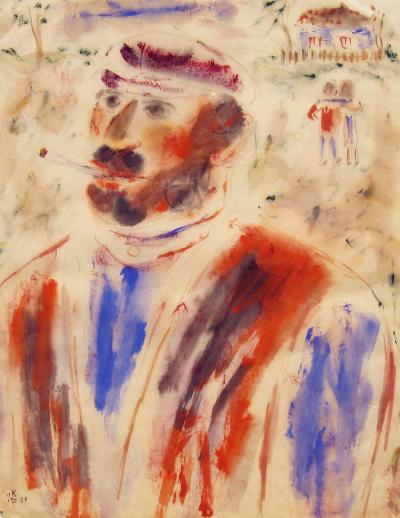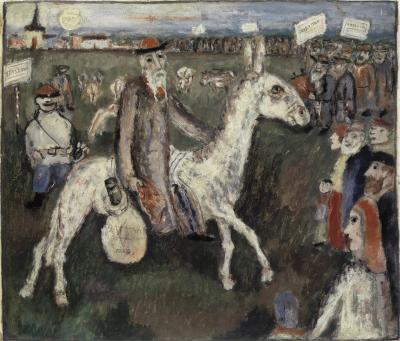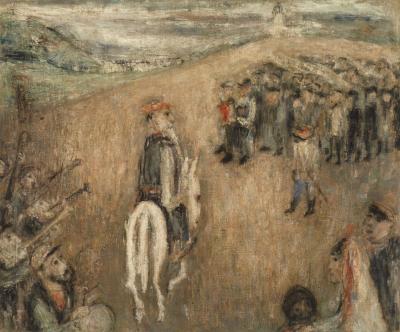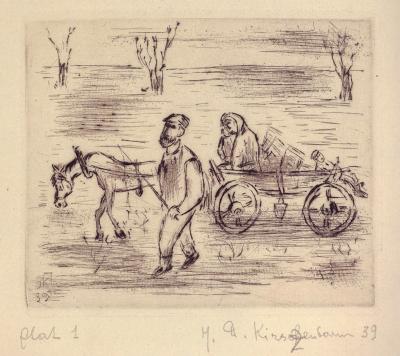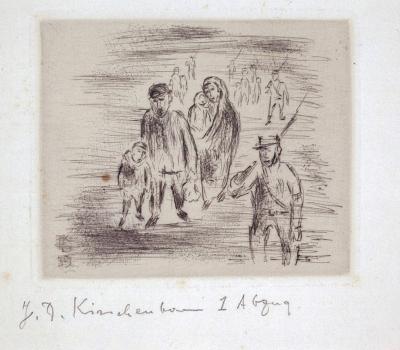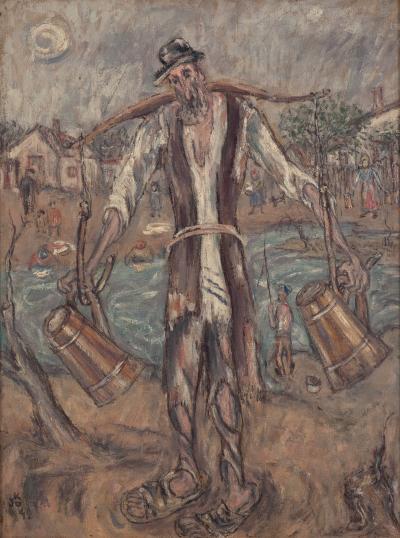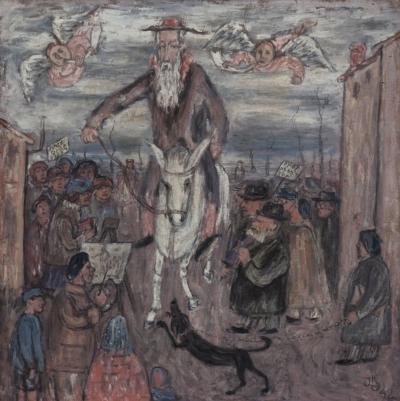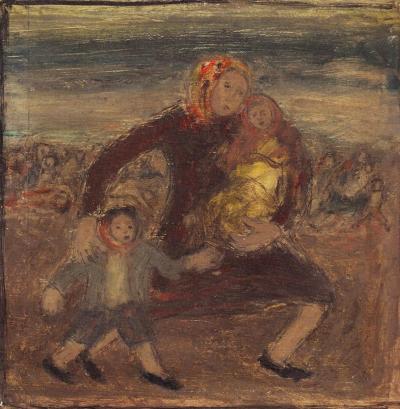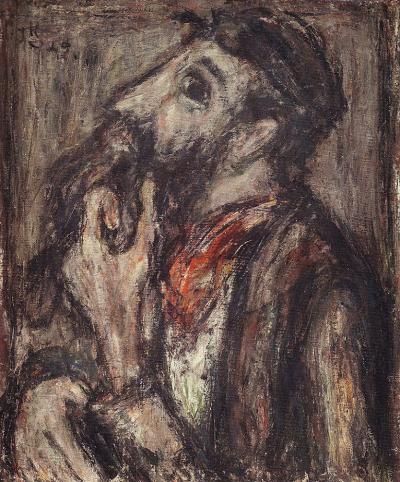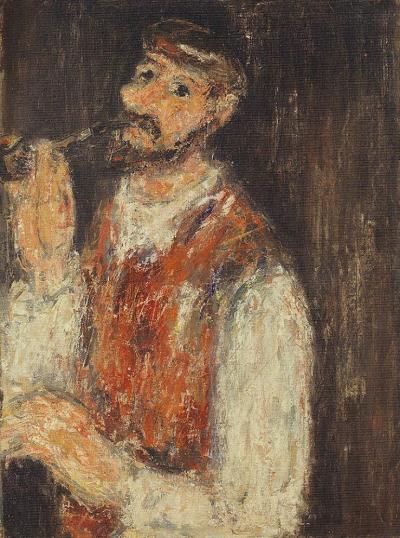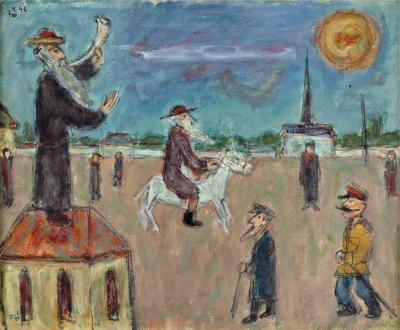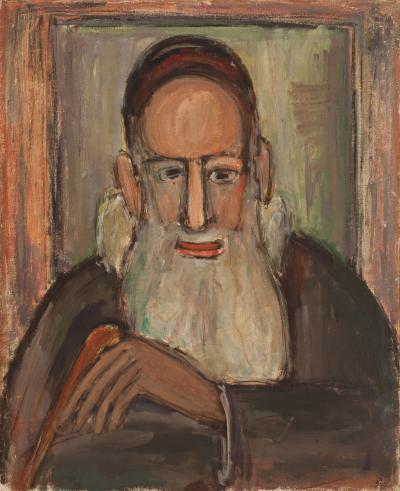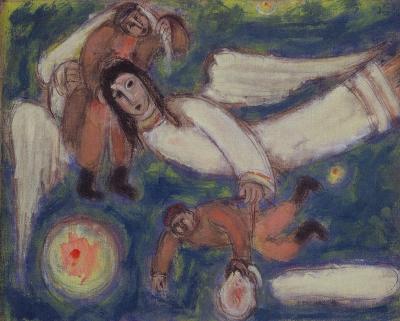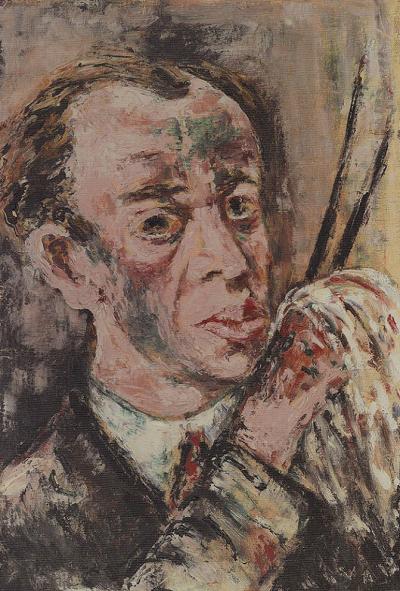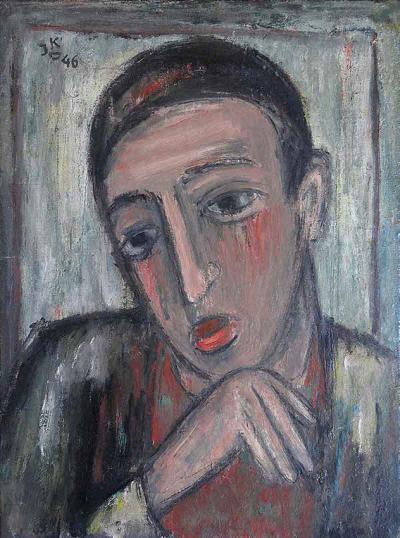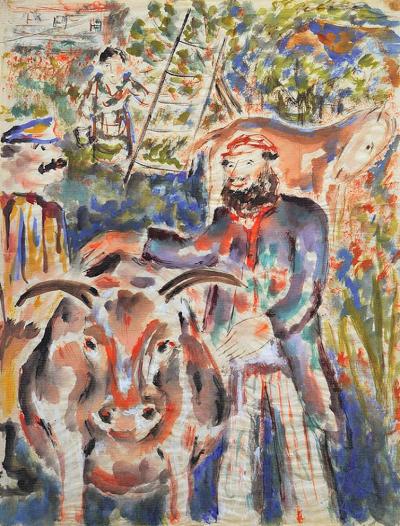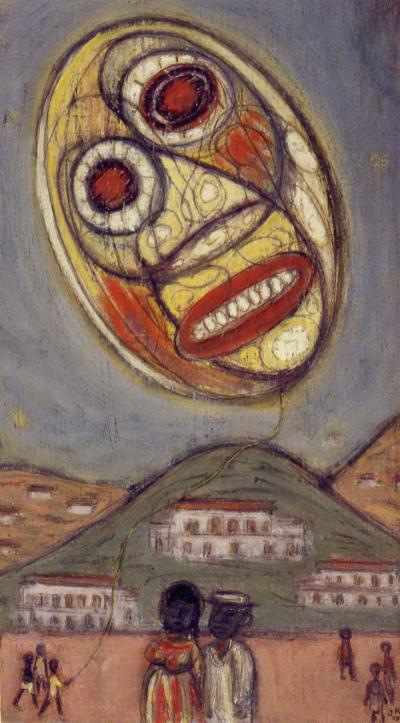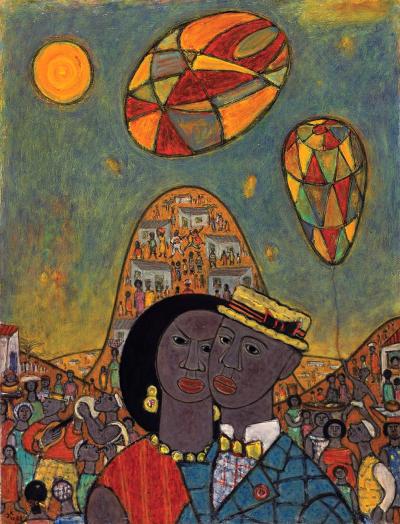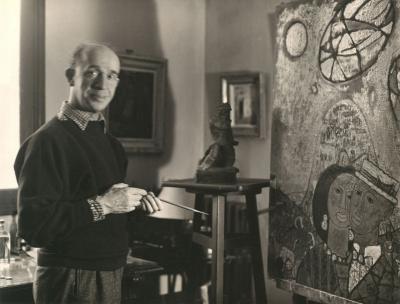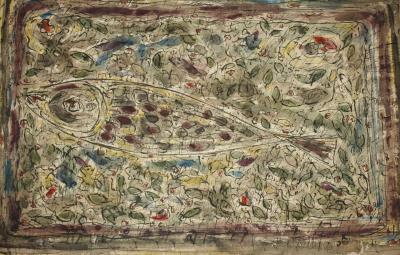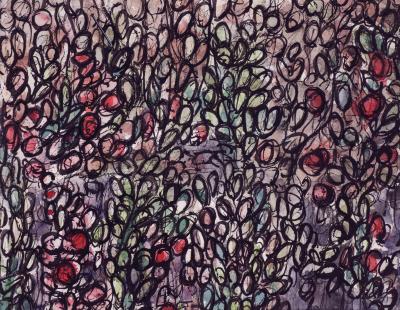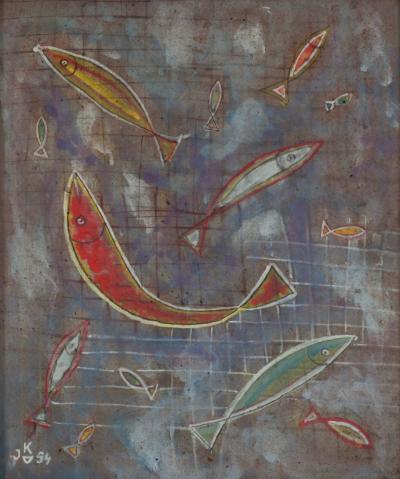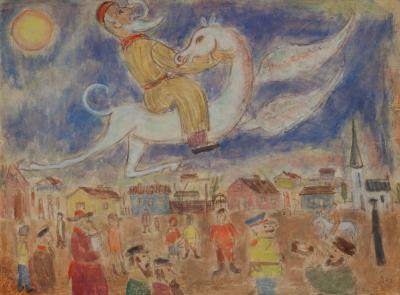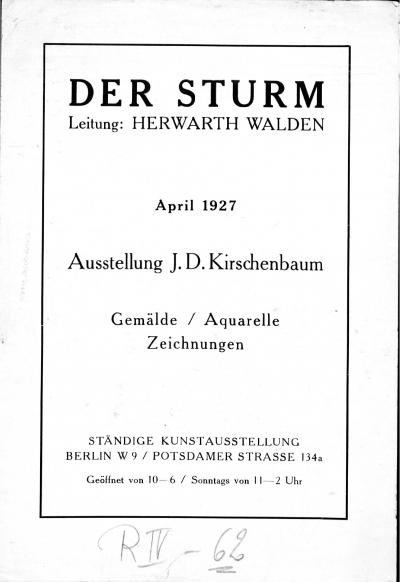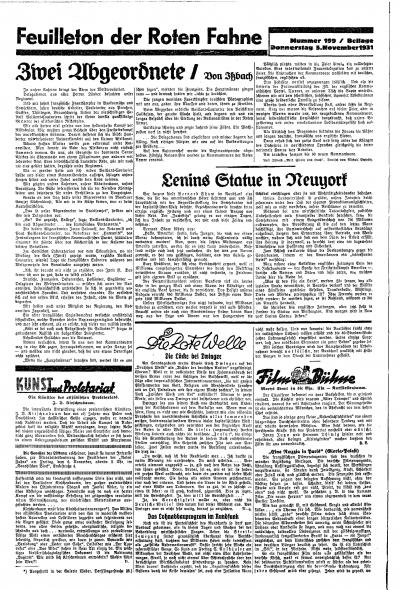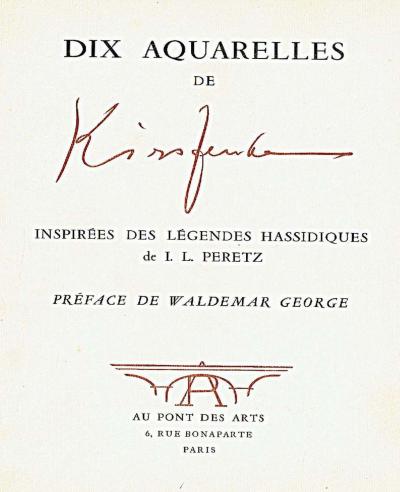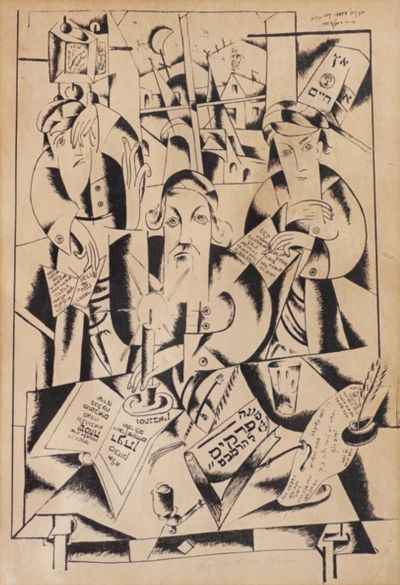Jesekiel David Kirszenbaum (1900–1954). Student of the Bauhaus

From 1933 to the beginning of the Second World War, Kirszenbaum was an active member of the École de Paris, a fact evidenced by the few works and pieces of information preserved from these years. The term École de Paris does not describe a consistent art style or a closed group of artists, but rather all the French artists, but mostly the foreign artists, who shaped contemporary art coming out Paris from the turn of the 20th century. The French artists, such as Derain, Matisse, Braque, Rouault or Léger, who had settled in the Montparnasse district, were joined in several waves of immigrants by artists from Spain, Italy, the Netherlands, Germany and South America, but in larger number by artists from the Eastern European countries, such as Russia, Poland, Bulgaria, Czechoslovakia, Romania and Hungary, who formed a vibrant artists’ quarter on the Montparnasse with its countless ateliers and cafes.
Only in more recent times has reference been made again to the fact that a large proportion of the foreign artists were of Jewish descent. They included at different times Henryk Berlewi, Marc Chagall, Henri Epstein, Otto Freundlich, Moise Kisling, Moise Kogan, Roman Kramsztyk, Rudolf Levy, Jacques Lipchitz, Louis Marcoussis, Amedeo Modigliani, Mela Muter, Jules Pascin, Issachar Ryback, Lasar Segall, Chaim Soutine, Marek Szwarc, Ossip Zadkine and many others. It is assumed that there were about five hundred artists who found their way from their native countries to Paris in the interwar years because of anti-semitic persecution and difficult personal or political circumstances, with 180 of those achieving greater importance.[71] After Hitler seized power, the Bauhaus student Moses Bagel, who was born in Vilnius, and the artists Jankel Adler and Kirszenbaum, who originated from Poland, as well as the painter Jacob Markiel, who came from Łódź, all fled from Germany to Paris. According to Claude Lanzmann, of the known artists, seventy one, that’s forty percent, died in the gas chambers of the German concentration camps located on Polish soil.[72]
Only a few of these artists devoted themselves to distinctly Jewish themes: Chagall, Kirszenbaum, Ryback, Arthur/Artur Kolnik who hailed from Stanisławów, and Emmanuel Mané-Katz born in the Ukraine. Kirszenbaum, who spent a lot of time in the museums and galleries of Paris studying both the older French masters and the modern ones and who is said to have been friends with Georges Rouault,[73] produced around six hundred paintings in the period from 1933 up to the start of the Second World War. They were confiscated from his apartment and destroyed by the Germans following their invasion of Paris.[74] This was the second time that the artist had lost all the work he had produced to that point.
At the outbreak of the Second World War, Kirszenbaum and his wife were interned and separated from one another. He was detained in the Meslay-du-Maine camp east of Rennes, in which two thousand German and Austrian civilians from the Paris region were interned from September 1939 to June 1940 and which had been evacuated when the Germans advanced. He was then moved to a labour camp for foreign nationals in the village of Saint-Souveur near Bellac in the Haute-Vienne departement. Evidently, he was able to escape from there in 1942 and went into hiding until the end of the war.[75] Until June 1940, Helma Kirszenbaum was imprisoned in the Camp de Gurs internment camp in the South of France not far from the Spanish border. She was later released but stayed in Gurs to wait for her husband.[76] She presumably returned to Paris again later. At the end of 1943, she was arrested and taken to the Drancy collection and transit camp twenty kilometres north-east of Paris, from where 65,000 predominantly French Jews were sent to extermination camps. From there she was deported on 20 January 1944 to the Auschwitz concentration camp and murdered.[77]
Kirszenbaum continued to produce artistic work during his time in the camp and underground. In winter 1939, he produced a late-impressionist “Landscape with church”, which was predominantly painted in grey tones and which today is in the Israel Museum.[78] In 1940 he produced the view of a farmstead in spring.[79] Using a similar technique in Bellac in 1941, he painted a wood collector in a winter landscape who he may actually have seen there and is presumably not drawn from his recollections of Staszów.[80] With its concentration on colour and its serial abstraction, a series of still lifes with bouquets of flowers in bellied vases seems to have been influenced by the Fauves, perhaps by Vlaminck.[81] In 1942, recollections of Staszów were produced: a “Jew on a wintry street”[82], a “Staszów water carrier” (Fig. 42) and the painting “The Messiah and the angels arrive at the village” (Fig. 43), which again transfers the Christian theme of “Jesus entering Jerusalem” or Ensor’s Adaption to Jewish life. The painter paints himself in the picture (bottom left) as he records the scene with brush, palette and easel. The last three paintings show a late-impressionist painting style in grey and brown tones and are presumably just the few remaining examples of a much more extensive work that has been lost.
[71] Nieszawer 2015 (see Literature), page 397. Research carried out by Nadine Nieszawer, who points out that the Jewish origin of the largely internationally renowned artists has hardly been mentioned up to this point, is based on the early works of Chil Aronson: Images and faces of Montparnasse/Bilder und geshtaltn fun Monparnas/Scènes et visages de Montparnasse. Foreword by Marc Chagall, Paris 1963, and Hersh Fenster: Undzere farpaynikte kinstler. Foreword by Marc Chagall, Paris 1951
[72] Claude Lanzmann: Foreword, in: Nieszawer 2015 (see Literature), page 396
[73] J.D. Kirszenbaum 2013 (see Literature), page 59, 66
[74] Letter dated 20 April 1945 (see comment 57)
[75] ibid.
[76] Letter from Helma Kirszenbaum to her husband dated 1 July 1940 from Gurs; Postcard from Jesekiel Kirszenbaum to his wife dated 26 July 1940 from Saint-Sauveur near Bellac, exhibited in the Jesekiel Kirszenbaum 2019 exhibition in the Centre for Persecuted Arts/Zentrum für verfolgte Künste in Solingen; see the report in this portal, https://www.porta-polonica.de/de/atlas-der-erinnerungsorte/jesekiel-kirszenbaum-ausstellung-solingen, Fig. 8; the postcard depicted in J.D. Kirszenbaum 2013 (see Literature), page 78
[77] Central database of the names of the victims of the Holocaust, https://yvng.yadvashem.org/nameDetails.html?language=de&itemId=11562929&ind=0
[78] Landscape in winter with church, 1939, Israel Museum, Jerusalem, https://www.imj.org.il/en/collections/193211
[79] See the Solinger exhibition in this portal, https://www.porta-polonica.de/de/atlas-der-erinnerungsorte/jesekiel-kirszenbaum-ausstellung-solingen, Fig. 25
[80] J.D. Kirszenbaum 2013 (see Literature), page 34, https://www.kirszenbaum.com/early-period?lightbox=imagebsv
[81] ibid., page 58, 61
[82] ibid., page 72

















































































